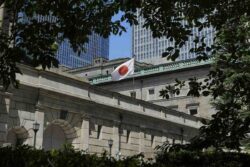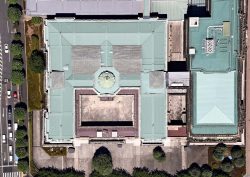13:00 JST, January 30, 2022
The business of space development is entering a new era of competition.
Japan must quickly develop a next-generation mainstay rocket that can compete against the rest of the world. However, the development of the H-3, a new domestic rocket being jointly developed by the Japan Aerospace Exploration Agency (JAXA) and Mitsubishi Heavy Industries, Ltd. has been delayed.
Its inaugural launch was scheduled to take place by the end of March this year but was postponed again due to engine problems. The final stage of development appears to be running into difficulties.
The H-3 is the successor to the current mainstay rocket, the H-2A. It was initially planned to be launched in fiscal 2020, but this was postponed at one point for such reasons as the discovery of cracks in a turbine, caused by metal fatigue, during operational tests of the new engine.
The first issue was almost solved, but in 2021, another problem was found in the turbine when it was checked again. The fact that no new launch date can be given is an indication of the difficulty of the problem.
Rocket engines are precision equipment, and development is not easy. A turbine is the heart of the engine and it rotates at a high speed of several hundred times a second, and it is prone to abnormal vibrations. The difficulties that accompany the development of a new rocket must be overcome.
The new glitch is said to be solvable. The H-2A boasted a high launch success rate of about 98%.
JAXA may have decided that more time is needed to continue to ensure such high reliability in the H-3 rocket.
In the meantime, start-up companies around the world are rapidly developing rockets. The U.S. company SpaceX has overcome repeated failures and is rapidly establishing a system capable of inexpensively launching many rockets. It is now a leader in the global rocket market.
The development of the H-3 was started with the aim of halving the cost of a single launch from the H-2A’s ¥10 billion to ¥5 billion, and becoming able to compete against such companies as SpaceX. If the development of the H-3 is further delayed, there are concerns that Japan will fall behind in the global competition for receiving orders.
The H-3 is scheduled to bring Japan’s Daichi-3 land observation satellite and other satellites into space. It will also be responsible for the launch of Japan’s new cargo transfer spacecraft, the HTV-X. In this regard, the delay could negatively affect not only commercial activities but also Japan’s overall space development program.
Having the ability to launch Japan’s own satellites with its own rockets is important for this nation to take the lead in space development. Japan needs to steadily maintain and develop its rocket technology.
— The original Japanese article appeared in The Yomiuri Shimbun on Jan. 30, 2022.
"Editorial & Columns" POPULAR ARTICLE
-

Violations of Subcontract Law: Major Automakers Must Eliminate Old Practices
-

Local Governments’ Tax Revenues: Devise Ways to Correct Imbalances in Tax Sources
-

Heavy Rains in Asia: Support for Victims, Flood-Control Measures Urgently Needed
-

5 Japanese Business Dinner Mistakes to Avoid — and What They Taught Me About Business in Japan
-

New Nuclear Threat: China Seeking to Follow U.S., Russia in Military Expansion
JN ACCESS RANKING
-

Keidanren Chairman Yoshinobu Tsutsui Visits Kashiwazaki-Kariwa Nuclear Power Plant; Inspects New Emergency Safety System
-

Imports of Rare Earths from China Facing Delays, May Be Caused by Deterioration of Japan-China Relations
-

University of Tokyo Professor Discusses Japanese Economic Security in Interview Ahead of Forum
-

Japan Pulls out of Vietnam Nuclear Project, Complicating Hanoi’s Power Plans
-

Govt Aims to Expand NISA Program Lineup, Abolish Age Restriction




















